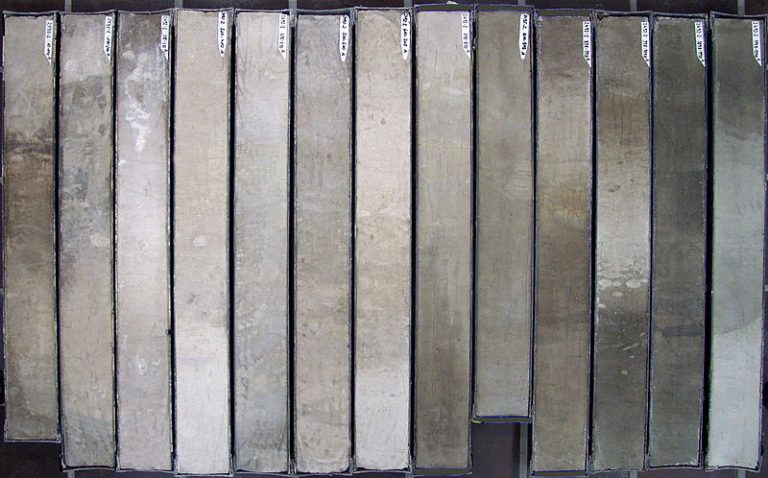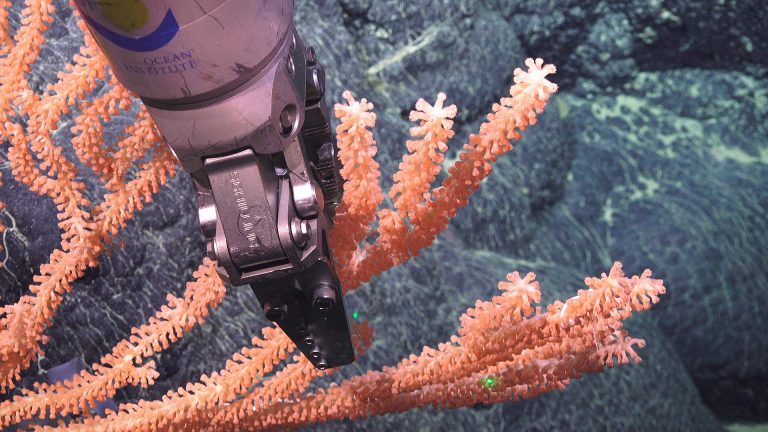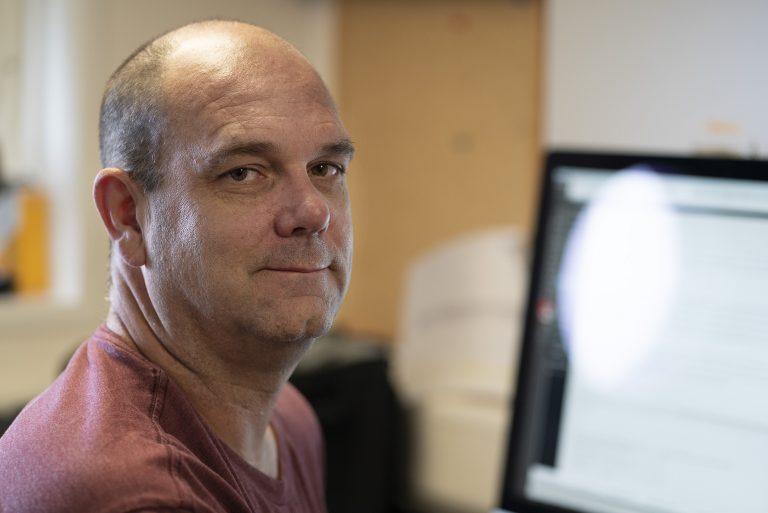Some time ago, there were aspects of Brendan Roark’s PhD project that were not going as planned. One day, he ran into a professor at Stanford University and began a conversation about his interest in climate change and paleoceanography. The professor shared that he had collected a handful of deep-sea corals in Hawai’i and that he was not making progress in convincing any of his graduate students to work with the samples. Nonetheless, the professor knew these samples had potential, so he began writing proposals to get funding to work with them. What started as a side-project for Roark’s PhD journey became his career.
Hard Questions
Science begs questions, no matter how difficult finding the answers might be. Once a question is raised, it is then up to experts to design a way to uncover the answer. In oceanography, one ambitious yet simple query is: What is the history of this parcel of water? What were its characteristics a hundred, a thousand, or even four thousand years ago? This is the question that paleooceanographers like Dr. Brendan Roark devote their time to answering.
Unlike a rock, which you can pick up and analyze in a laboratory, water moves around, mutating and picking up signatures from wherever it travels, especially in the ocean. “A lot of the high-resolution records of what climate has looked like in the past come from ice cores and ocean sediment cores,” explains Dr. Roark. “One limitation of ocean sediment cores is that they are typically relatively low resolution in terms of time – meaning the time that each sample represents is long. You have sedimentation rates in the open ocean of several centimeters per thousand years, so if you sample one centimeter you’re getting an average of several hundred years.” Sediment cores have another disadvantage: it is very difficult to get sediment cores in intermediate waters, from three hundred to two thousand meters of depth. That creates a huge gap in the historical record.

Corals Come In
That is where deep-sea corals come in. Deep-sea corals as a tool for paleoceanography are a relatively new research area, people have only been exploring their use as an archive for about 20 years, 25 at most. Which means Dr. Roark embarks today onboard Falkor on a double mission: to determine the history of the water in this North Pacific region and to develop the techniques through which we extract that information from corals.
“What I have been doing for a good part of my career is trying to figure out what proxies we can measure in deep-sea corals and then using them to reconstruct past ocean conditions,” he explains. “When we talk about a proxy is, what we are really talking about is a measurement that you can make in a coral that can serve as a stand-in for an environmental variable.” Take planktonic foraminiferans in sediment cores, for instance. Today we know that if you measure oxygen isotopes in them, then you are getting a temperature or an ice volume record. Scientists have been able to determine a quantifiable relation between oxygen isotopes measured in foraminifera and temperature and/or ice volume.
Dr. Roark and paleooceanographers need to identify such proxies when it comes to correlating coral sample proxies and water characteristics through history. “There are not a lot of proxies that have been established that people are really truly confident in applying. Carbon or nitrogen isotopes, Mg/Ca ratios: all are proxies for different environmental variables, and we try to correlate those measurements to the modern record of nutrient concentration or temperature,” said Dr. Roark. If experts can provide a clear link between an environmental variable such as temperature and, say, Mg/Ca or Sr/Ca in a deep-sea coral, then they could extrapolate that link and feel pretty confident about going back in time, reconstructing temperature through the proxy measured in a deep-sea coral sample.

One Step At a Time
Before Dr. Roark can begin developing proxies and analyzing corals in his lab, he must make sure the samples collected at sea are exactly what he needs. He is looking for five or six different species which he knows are suitable for paleoceanography purposes. He must make sure they are the right size, and that both alive and dead coral samples are collected.
Bamboo corals – like the ones found in the Hawaiian Ridge and the Aleutian Trench – provide an invaluable record. It is been clearly demonstrated that all of the corals that deposit a proteinaceous skeleton do so from recently exported particulate organic matter from the surface water. This basically means they build their core using organic bits and pieces that fall from the surface of the ocean, irrespective of the depth at which those corals live. “For this project, the interesting thing about the bamboo corals is that they have both a proteinaceous node and a carbonate inner node,” says Dr. Roark, “So that proteinaceous section of skeleton is recording what is going on in the surface water, and the carbonate section of the skeleton is recording what is going on at the depths the coral lives in.”
Yet it does not all come down to corals. Dr. Roark must also the sample water column, because characterizing the environment is fundamental to proxy development. “Some people make fun of me because they say that I have become more of an ecologist or biologist and less of a paleoceanographer,” he laughs. It is true. His passion has pushed him out of the boundaries of paleoceanography, but Dr. Roark understands that in order to paint a holistic picture of what the water was doing in the past, we have to understand what it is doing in the present.

Fast Forward
It was about twenty years ago when interest in climate change and water history began driving Dr. Roark’s career. At that time, academia was well aware of climate change, but they did not know the type of processes that would be taking place in the future ocean. “We have come to learn so much more, not only on a global basis, but on a regional scale. The importance of say, intermediate water variability and oxygen concentrations in the interior of the ocean is something that 25 years ago we only suspected might be concerning.” He reflects, “There were a few people saying that it had the potential for change. We now know that not only it has the potential to change, but it has been changing. What the consequences are… that’s still largely unknown.” Thist is when climate change and future oceans stop being simply scientifically intriguing, and become daunting on a personal level.
“We’re even seen that some predictions from back then were too conservative, so you start getting more concerned. From a big picture standpoint, I think it’s too scary to dwell on – there’s a difference between your professional and personal worries. Professionally, you do what you can to make your research relevant to the decisions society is making and to help our overall understanding,” he states confidently. At the end of the day, Dr. Roark knows the scientific community does not need to be convinced about the veracity and urgency of climate change. In his eyes, it is the public – and more importantly, policy makers – that need to be convinced .


